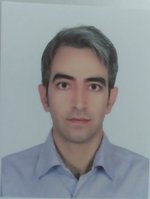Human-robot collaboration plays an important role in a smart factory that is the result of industry 4.0. Therefore, collaborative robots have been developed and rapidly accepted to conduct the human-robot collaboration while reducing cost, simplifying programing, increasing flexibility, etc. This PhD thesis project aims to address the challenging problems on the dynamics and control of collaborative robots. The major research efforts are made towards the threefold investigation: 1) Joint dynamics modeling with the consideration of the comprehensive geometries of structure, and the impacts of internal interaction and external stimulate of harmonic drive on joint dynamics, 2) Impedance control strategy considering the inherent flexibility of robot joints and accurate joint dynamic models, and the advanced learning algorithms for determining the optimal inertia, damping and stiffness of impedance control, and 3) Human-Robot interaction with the collaborating-scene-graph construction of factories, and collision risk assessment and reduction for safe human-robot cooperation. In addition, the real-time simulation and optimization technology, Digital Twins, will be employed to establish all the model of a collaborative robot system in the virtual world and be validated through experiments. The research achievements of this PhD thesis project will provide significant insights and guidance to the design and control of collaborative robots with applications to smart factories.
Project title: Joint Dynamics and Impedance Control of Collaborative Robots for Smart Manufacturing under Industrial 4.0
PhD student: Xingyu Yang
Contact: xingyu_yang@eng.au.dk
Project period: Dec 2020 to Nov 2023
Main supervisor: Xuping Zhang
Research section: Mechanical Engineering

Kamstrup’s flow meters are highly accurate instruments that rely on the propagation of ultrasounds to measure the flow rate of water moving through a pipe. The project’s objective is two-fold.
On one hand, to develop a robust optimisation tool, which further increases the quality of the meters by reducing the pressure loss in the pipe (a higher flow can be reached), increase the signal-to-noise ratio of the ultrasound transmission (more precise and repetitive measurements) and reduce the effect of inlet flow disturbances on the measurement (the meter is accurate even when mounted downstream of a bent pipe).
On the other hand, the implementation of an optimisation tool in the design process of new meters and thereby drastically reduce the number of prototypes and associated testing time. These objectives are achieved by developing a framework that combines computational fluid dynamics (CFD), optimisation techniques and uncertainty quantification to obtain reliable, optimised flow meters design at a fast pace. To achieve the rapid development required in industrial applications the project focuses on the use of advanced mathematical and theoretical techniques rather than on huge computational resources.
Project title: Robust optimization of flow meters using computational fluid dynamics with quantified uncertainty
PhD student: Mario Javier Rincón
Contact: mjr@eng.au.dk
Project period: Nov 2020 to Oct 2023
Main supervisor: Guoqiang Zhang
Research section: Mechanical Engineering

This project intends to research the dynamics and control of lightweight industrial mobile robot manipulators under Industry 4.0. Because of light weight, the component flexibility of the robot needs to be taken into account in the dynamics and control. It is also more important to analyse its dynamic problem by considering the influence of the dynamic interactions based on a more precise mathematical model. So, a new control scheme based on the model will be developed to make the mobile robot manipulator more efficient so they work safely alongside human co-workers for smart manufacturing under Industry 4.0. The control scheme can be optimised by considering dynamic compensation.
Finally, to validate and optimise the proposed kinematic and dynamic model and control scheme, extensive experiments will be conducted on a lightweight mobile robot manipulator.
Project title: Dynamics and control of lightweight industrial mobile robot manipulators for smart manufacturing under Industry 4.0
PhD student: Zhengxue Zhou
Contact: zhouzx@eng.au.dk
Project period: Sep 2019 to Aug 2022
Main supervisor: Assoc. Prof. Xuping Zhang
Research section: Mechanical Engineering

Money laundering is a serious financial crime with devastating consequences; it enables drug dealing, corruption, and terrorism.
To combat money laundering, banks are required to monitor and report suspicious customer behavior to authorities. In practice, all banks address this task by use of electronic anti-money laundering (AML) systems. Traditional systems raise alarms based on pre-defined and fixed rules, effectively “if this, then that” statements. These systems exhibit poor performance, with up to 98% of all alarms being false positives.
The academic literature on statistical and machine learning methods for anti-money laundering (AML) is relatively limited. This is undoubtedly connected to the lack of publicly available data sets.
The Machine Learning for Anti-Money Laundering project aims to develop advanced machine learning models to raise and qualify AML alarms – Freeing up inquiry recourses for actual money laundering cases. The project is funded by Spar Nord bank, also making all its data available for the project. The project focuses on the application of recurrent neural networks and attempts to address three fundamental challenges of machine learning for anti-money laundering: extreme class imbalance, concept drift, and alert-feedback interaction.
Project title: Machine Learning for Anti-Money Laundering
PhD student: Ramus Ingemann Tuffveson Jensen
Contact: rasmus.tuffveson.jensen@eng.au.dk
Project period: Nov 2020 to Oct 2023
Main supervisor: Alexandros Iosifidis
Section: Electrical and Computer Engineering

The biggest problem in the orthopaedic profession is the medical condition known as adolescent idiopathic scoliosis (AIS). In this condition, a person’s spinal axis has a three-dimensional deviation from normal, with no cure currently available. The aetiology of adolescent idiopathic scoliosis (AIS) is unknown, but the extensive research results show that the problem can be reduced by decreasing the imbalance of forces along the spine. This motivates us to develop a robotic and wearable exoskeleton (brace) to restore the balance of forces along the spine with the aim of making a major breakthrough in the complementary treatment of AIS patients, which affects 1-3% of the population.
Preliminary work has been done: mechanical design of one steward platform, controller design and control system for one steward platform. The project will extend the preliminary work, and the objectives include:
Project title: Development of robotic brace integrated with 3D-ultrasound for AIS treatment
PhD student: Farhad Farhadi Yadkuri
Contact: ffyadkuri65@eng.au.dk
Project period: Aug 2019 to July 2022
Main supervisor: Assoc. Prof. Xuping Zhang
Research section: Mechanical Engineering

The Danish government has announced plans to make the country fossil-fuel free by 2050. Likewise, the European neighbours have ambitious targets. This transformation is one of the biggest challenges of our society. Techno-economical modelling and optimisation approaches are able to deliver first guidance principles for such pathways, but more than this needs to be taken into account. The dynamics of investor decision making, the formation and design of new market rules, the influence of social acceptance and the impact of climate change are going to strongly influence the development of a future highly efficient energy technology portfolio. More fundamental knowledge of these interactions is required to supply policy and commercial decision makers with a quantitative description of how to implement the transformation of the energy system in the best possible, most cost-efficient and robust manner.
We will use our competencies in the modelling of networked renewable energy systems: the description of the Danish energy system will include the internal coupling between the energy sectors electricity, heating and transportation, and the external coupling to the energy systems of the neighbouring countries.
Optimal techno-economic systems will be derived, for instance by invoking an increase of the CO2 emission constraint, subsidising specific technologies, etc. The scenarios are transformed to pathways by modelling them as emerging from the current energy system. The transition dynamics of the individual nodes are analysed and compared. With the energy systems becoming more distributed - decentralised renewable capacity replaces centralised conventional generation capacity - the generation capacity does not only become more spatially distributed but also opens up the possibility for an increased number of smaller actors in the market. We will seek the right incentives and regulations which are necessary to guide a large amount of decentral investments to overall follow an optimal transformation of the energy system.
Project title: Fundamental socio-techno-economic modelling of the energy system transformation and the derivation of long-term sustainable strategies for Denmark in a European context
PhD student: Leon Joachim Schwenk-Nebbe
Contact: leonsn@eng.au.dk
Project period: March 2019 to Feb 2022
Main supervisor: Prof. Martin Greiner
Co-supervisors: Assoc. Prof. Gorm Bruun Andresen and Marianne Zandersen
Research section: Mechanical Engineering
AGROINTELLI is a Danish-based international development company with the goal of transforming research into products to the agricultural industry. The company relies on research-based development of products in the fields of robotics, machine vision and in-field navigation.
In agricultural engineering and research, tests and field trials are often limited to specific seasons. To accommodate this, modelling and simulation-based approaches are gaining ground in the industry.
By means of this project, AGROINTELLI wishes to increase the focus on the sub-surface soil displacements of a tillage process. The scope of this research is methods for modelling and simulating arable soil-tool interaction. Hereby we can test, evaluate and optimise a soil-engaging tool in a virtual setting before entering the field.
Project title: Physics-based modelling and simulation of arable soil-tool interaction
PhD student: Frederik Foldager
Contact: ffo@eng.au.dk
Project period: April 2018 to March 2021
Main supervisor: Prof. (Docent) Ole Balling
Research section: Mechanical Engineering

Project description:
The dynamics of wind turbines with multiple rotors connected on a single structure is more complex than that of conventional wind turbines with a single-rotor. In the design of multi-rotor turbines, it is therefore important to have appropriate estimates of the system and modal frequencies. Various modal analysis methods are available for single-rotor wind turbines, but there are no report and guidance on the modal property analysis of multi‐rotor wind turbines. This PhD will thus be the first state‐of‐the‐art on modal analysis of multi‐rotor wind turbines.
Research Questions
The basic research questions of this PhD project are:
Objective
The overall objective of this project is to develop a methodology for modal analysis of multi-rotor wind turbines by leveraging the technologies in multibody dynamics, structural dynamics and aerodynamics of wind turbines.
Project title: Modal dynamics and design analysis of multi‐rotor wind turbines
PhD student: Oliver Tierdad Filsoof
Contact: otf@eng.au.dk
Project period: Jan 2018 to Jan 2021
Main supervisor: Assoc. Prof. Xuping Zhang
Co-supervisor: Morten Hartvig Hansen
Research section: Mechanical Engineering